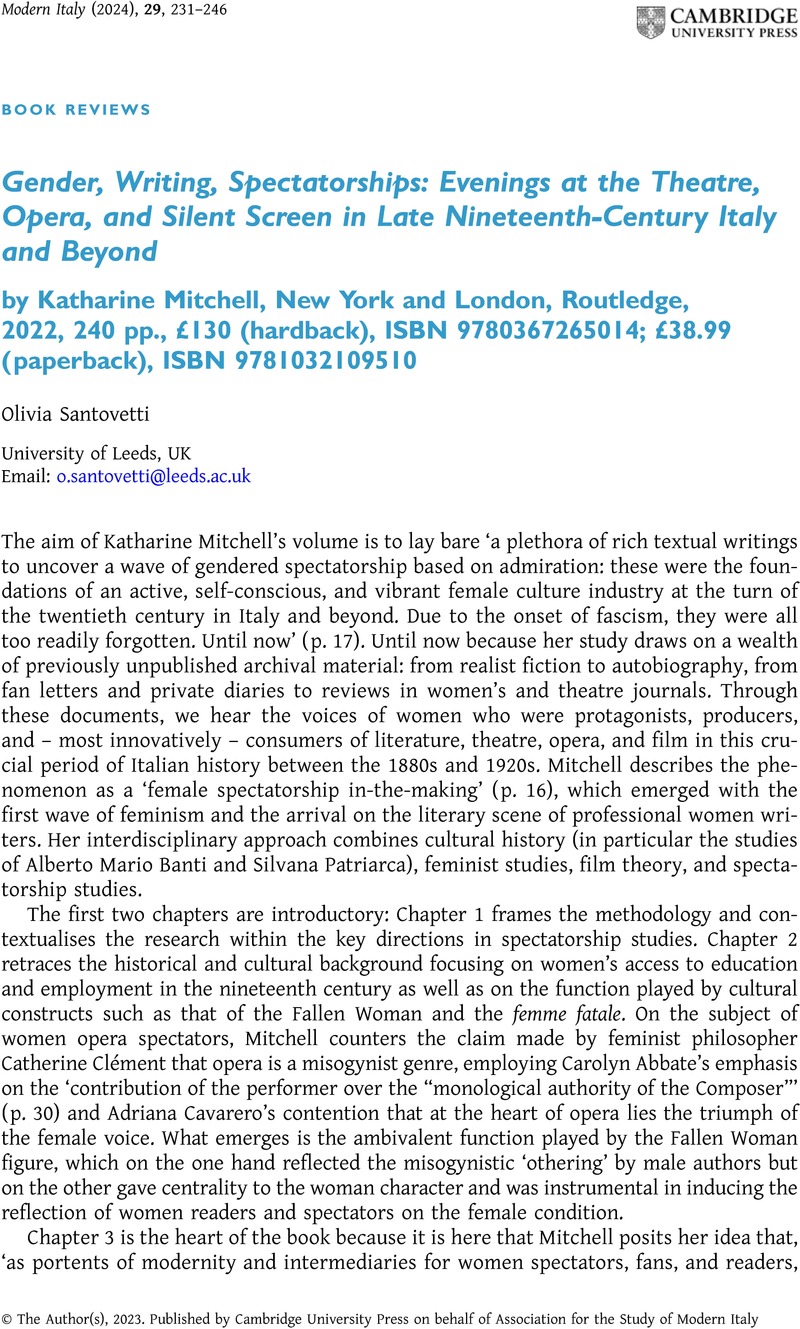No CrossRef data available.
Article contents
Gender, Writing, Spectatorships: Evenings at the Theatre, Opera, and Silent Screen in Late Nineteenth-Century Italy and Beyond by Katharine Mitchell, New York and London, Routledge, 2022, 240 pp., £130 (hardback), ISBN 9780367265014; £38.99 (paperback), ISBN 9781032109510
Review products
Gender, Writing, Spectatorships: Evenings at the Theatre, Opera, and Silent Screen in Late Nineteenth-Century Italy and Beyond by Katharine Mitchell, New York and London, Routledge, 2022, 240 pp., £130 (hardback), ISBN 9780367265014; £38.99 (paperback), ISBN 9781032109510
Published online by Cambridge University Press: 23 August 2023
Abstract
An abstract is not available for this content so a preview has been provided. Please use the Get access link above for information on how to access this content.

- Type
- Book Review
- Information
- Modern Italy , Volume 29 , Special Issue 2: Gendering work in 20th century Italy , May 2024 , pp. 231 - 233
- Copyright
- Copyright © The Author(s), 2023. Published by Cambridge University Press on behalf of Association for the Study of Modern Italy


